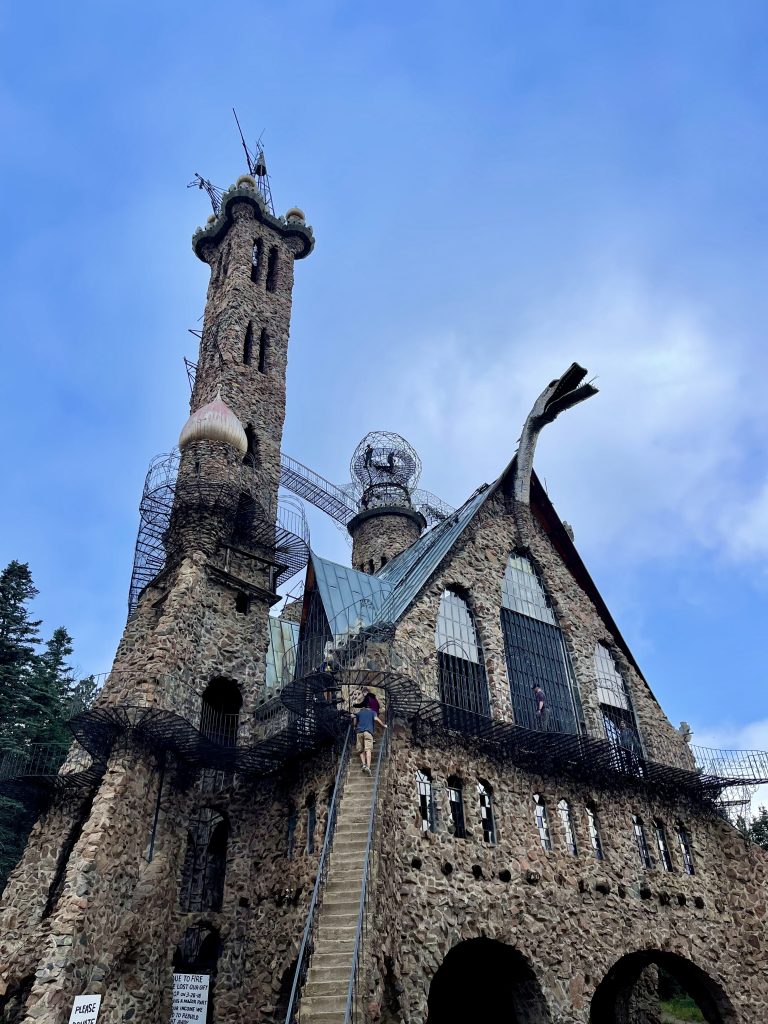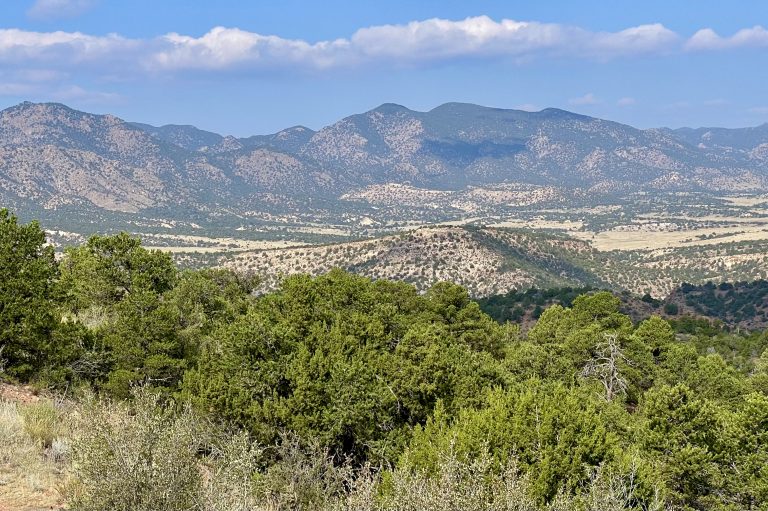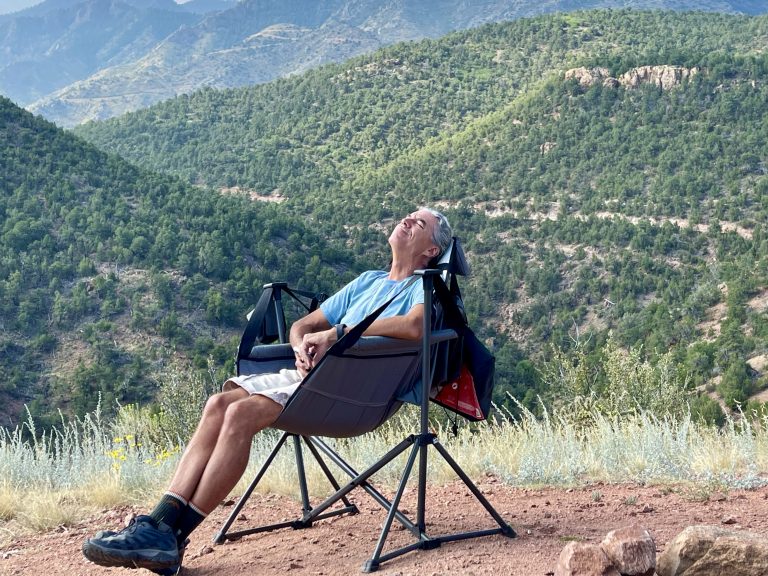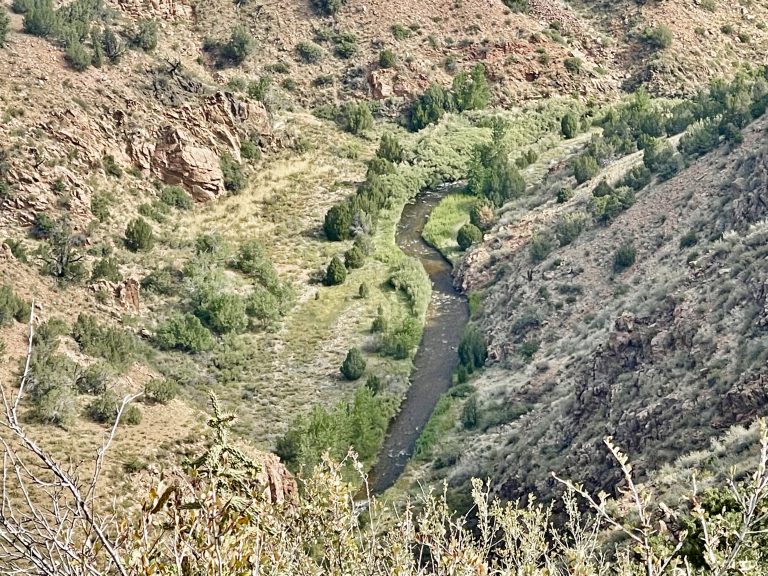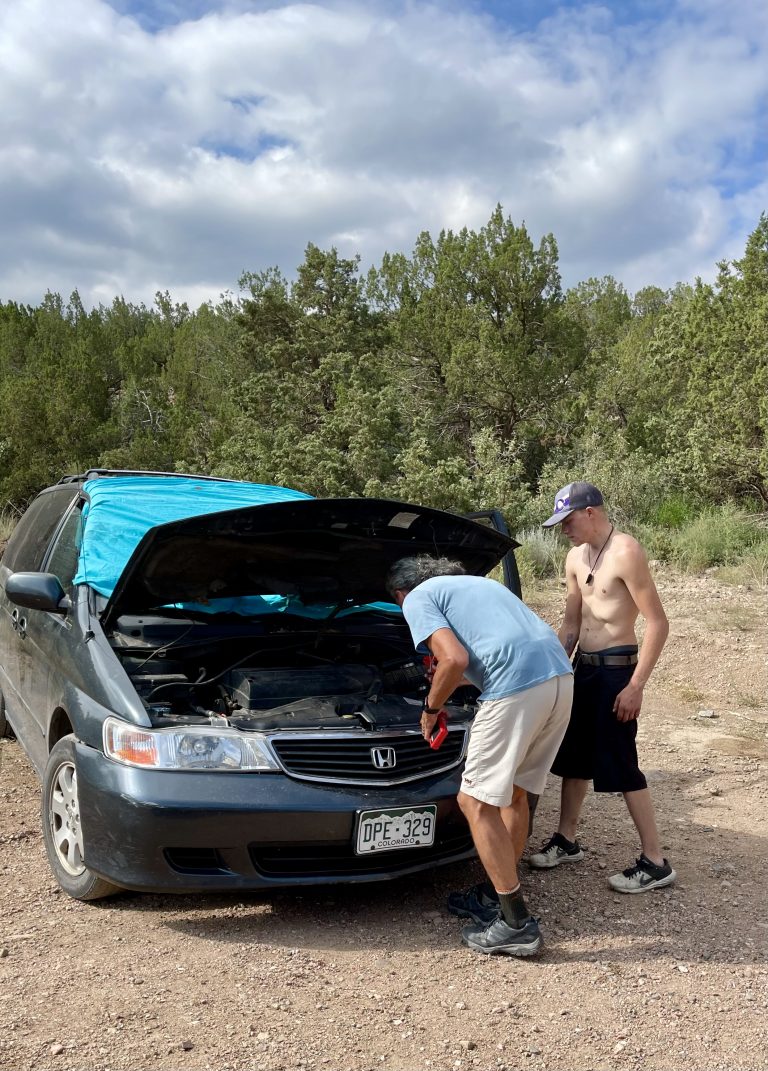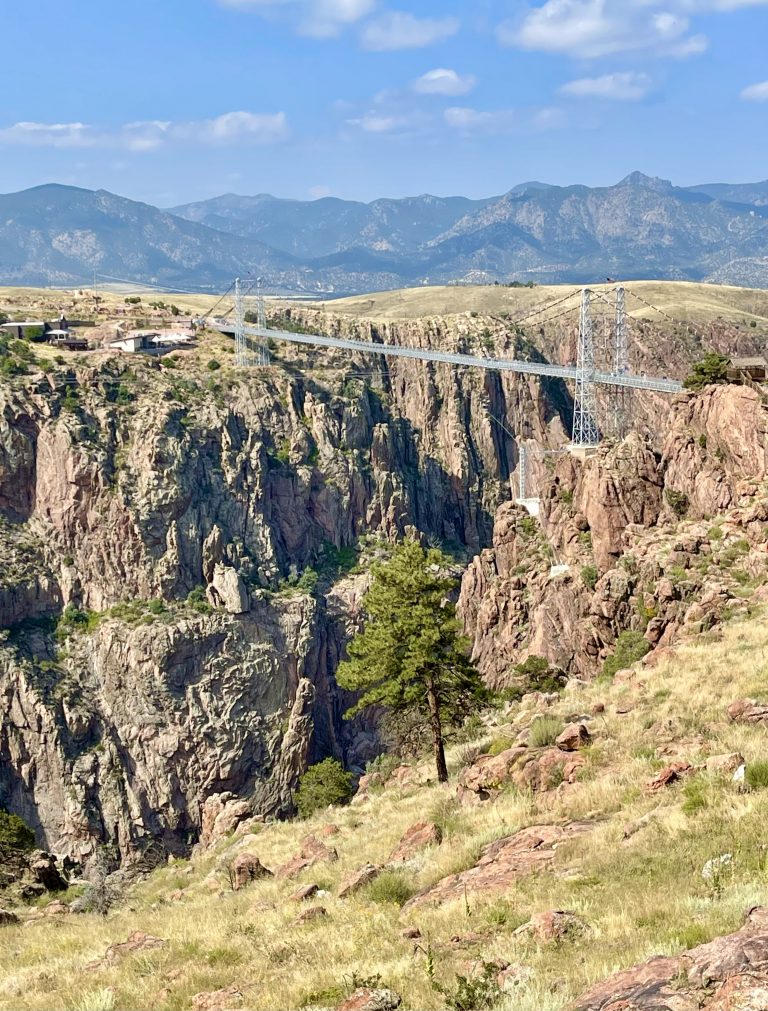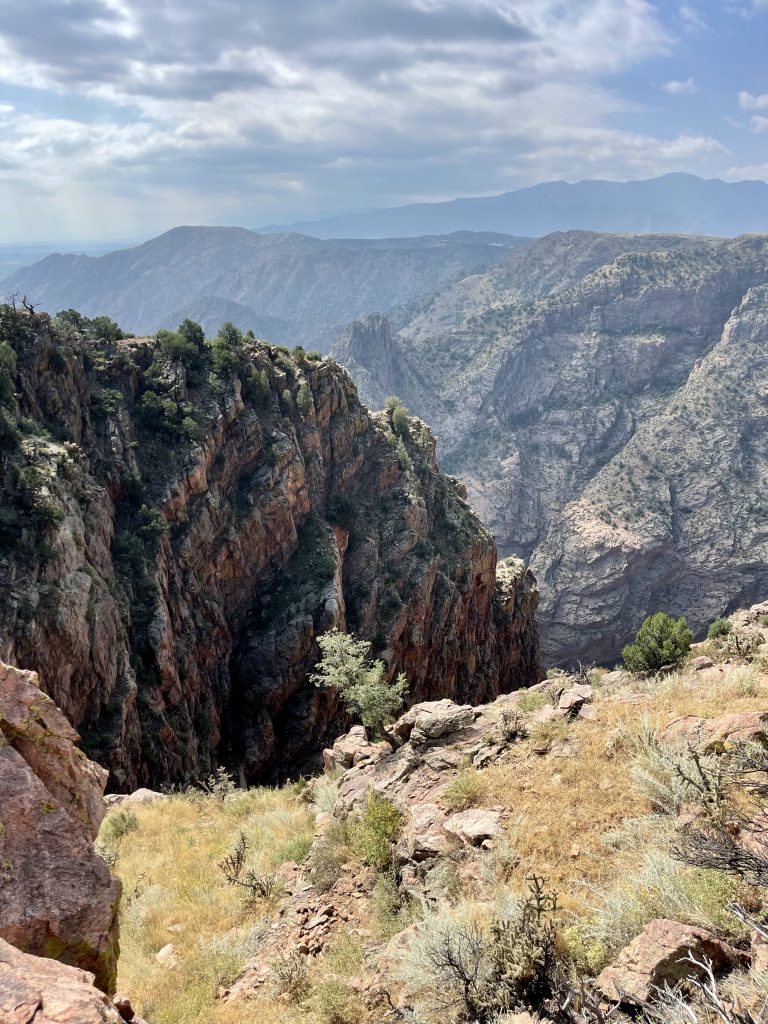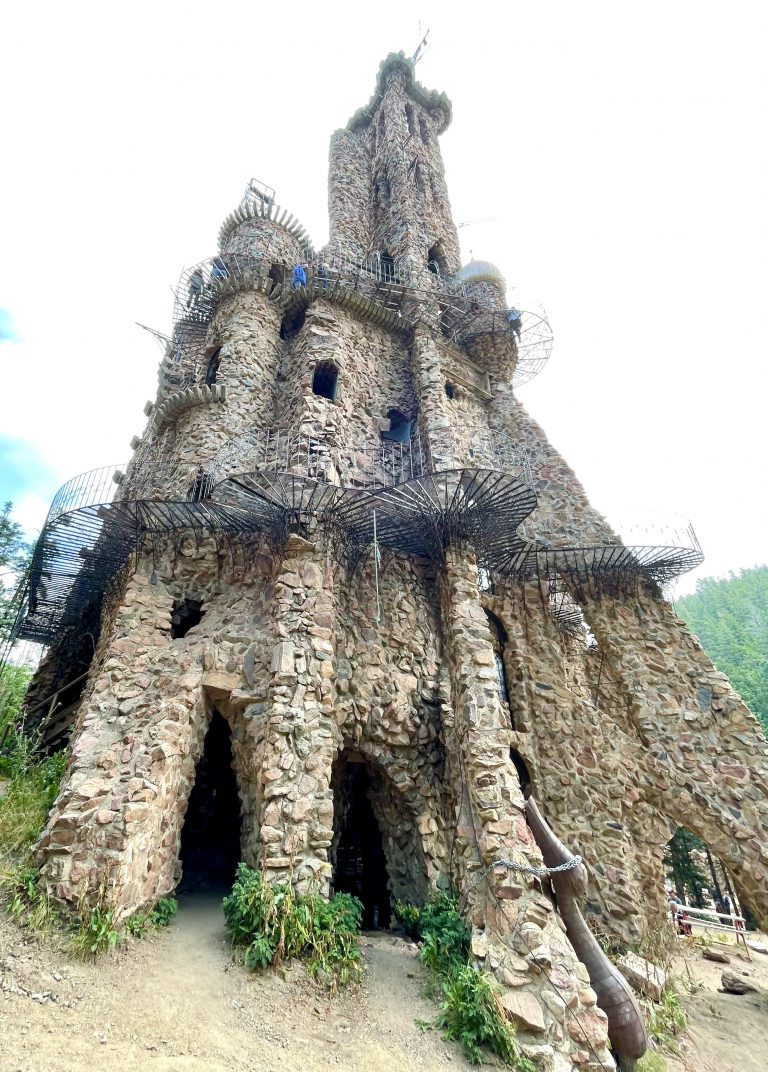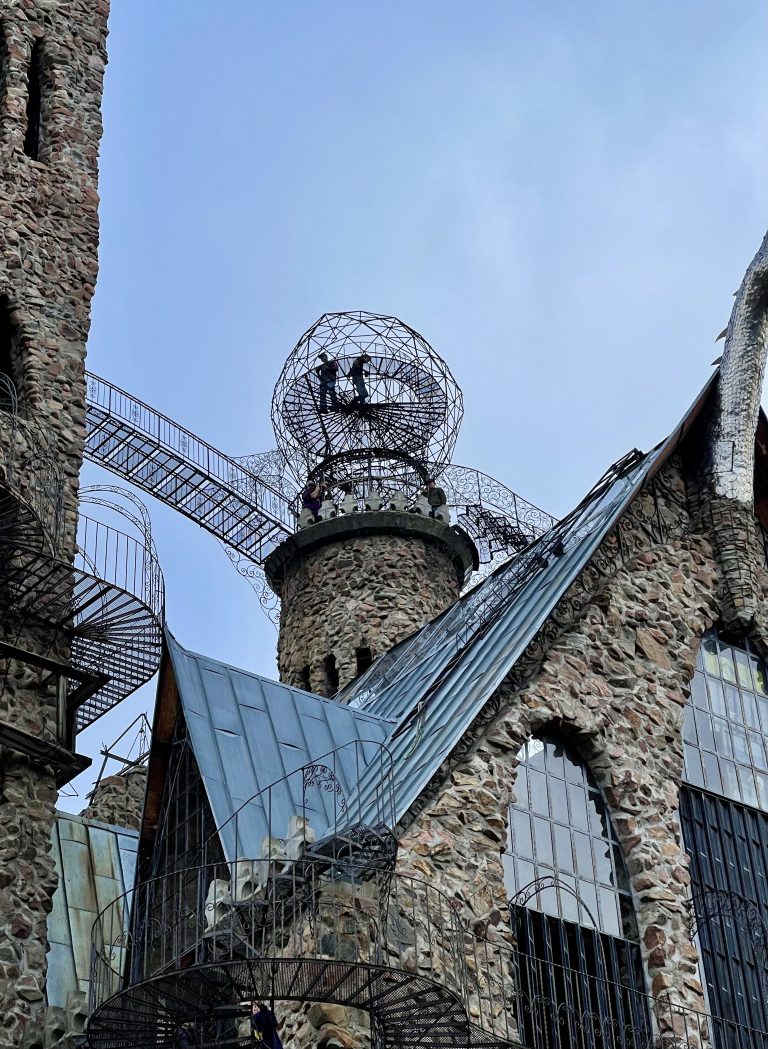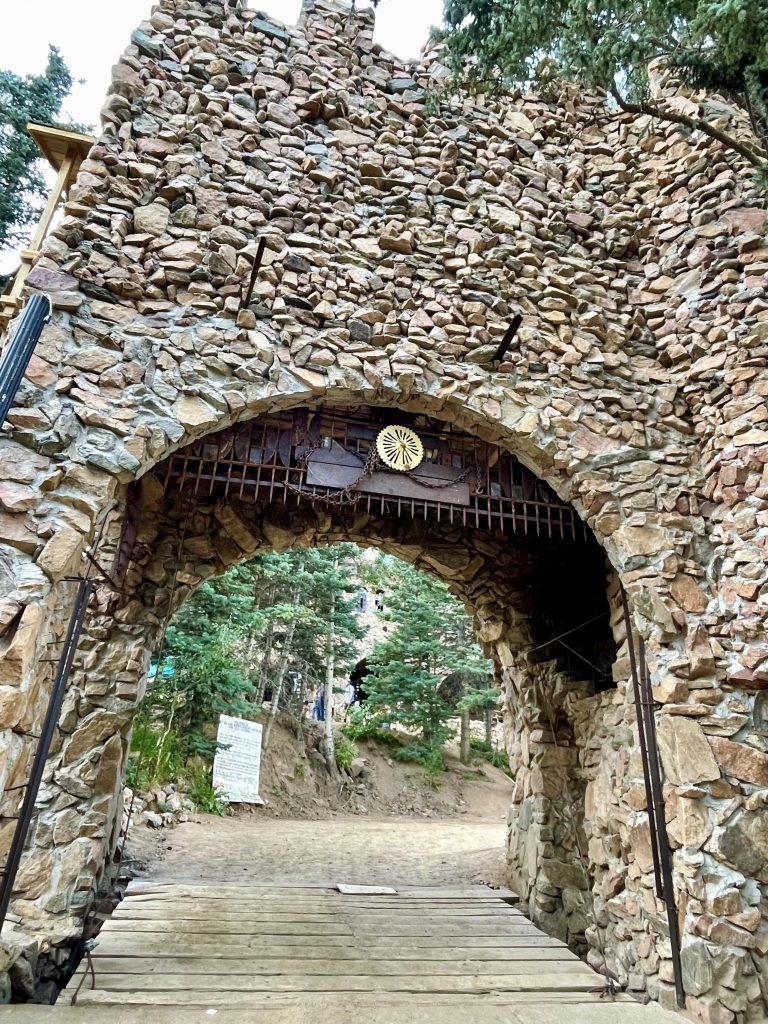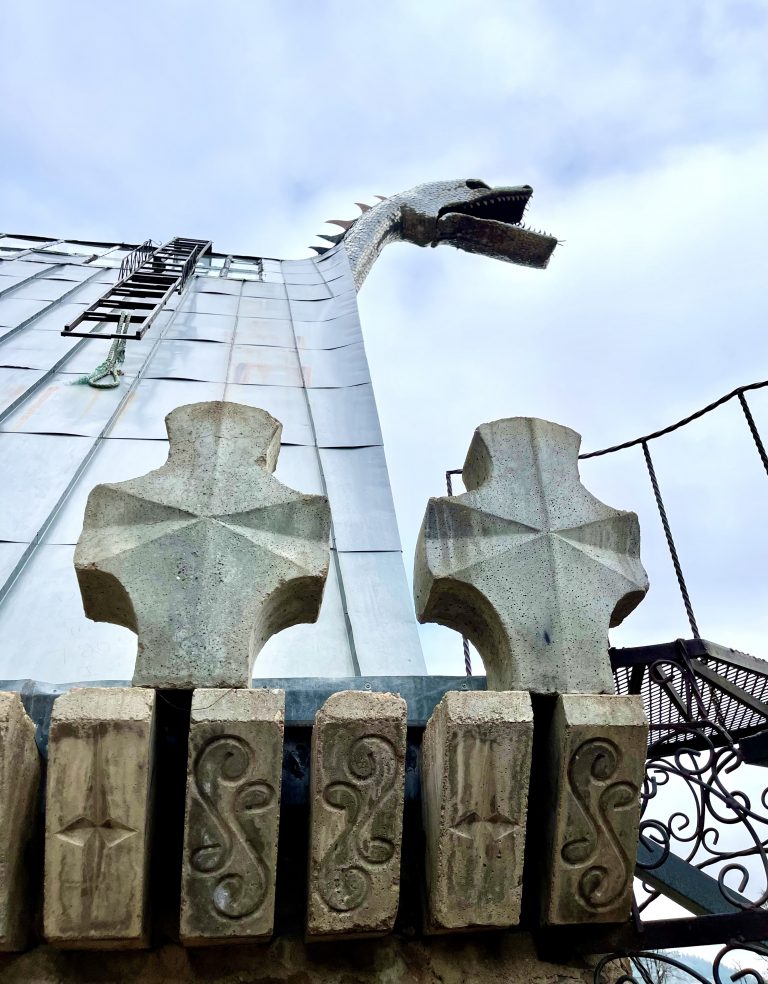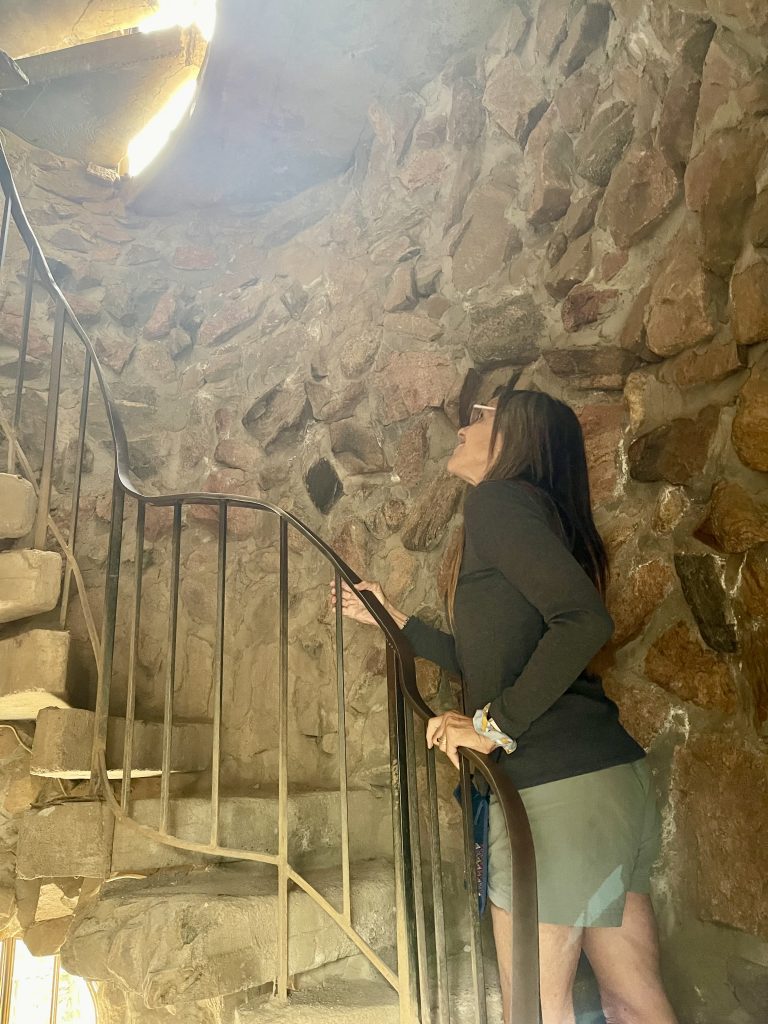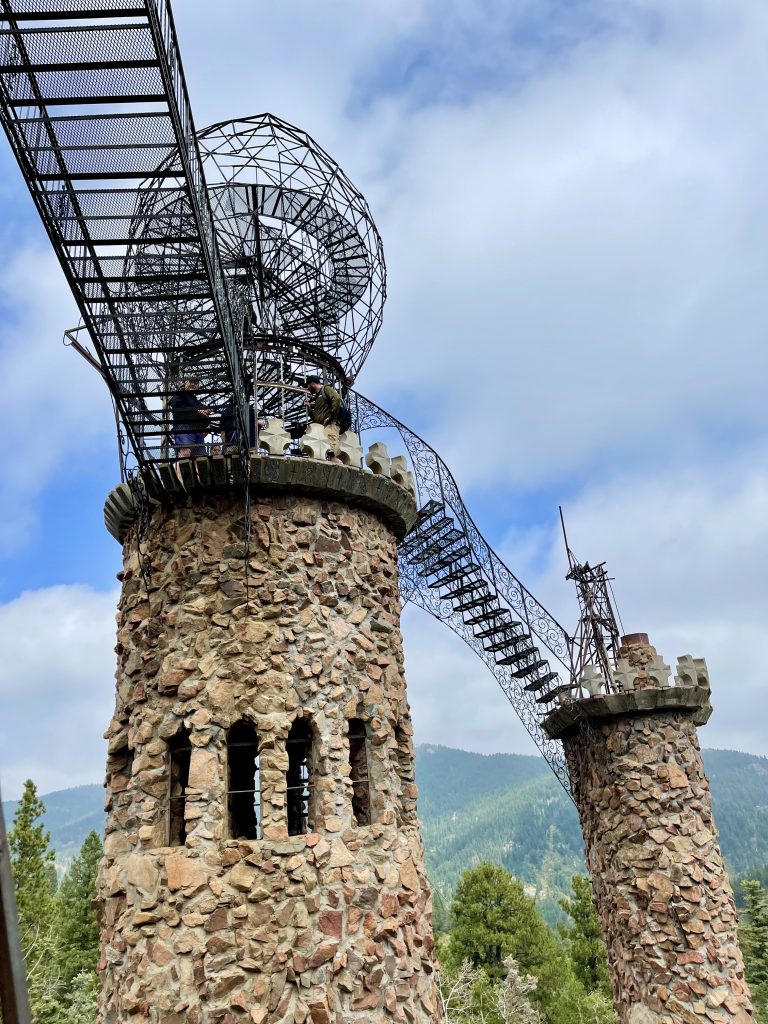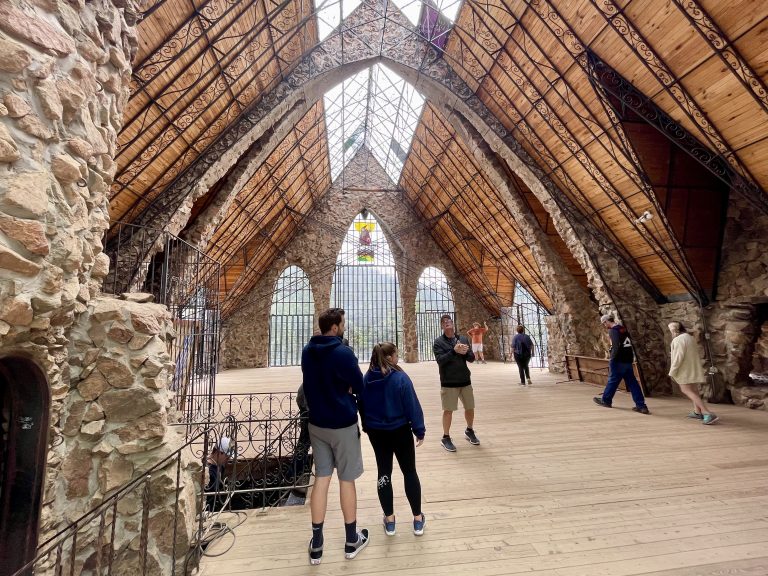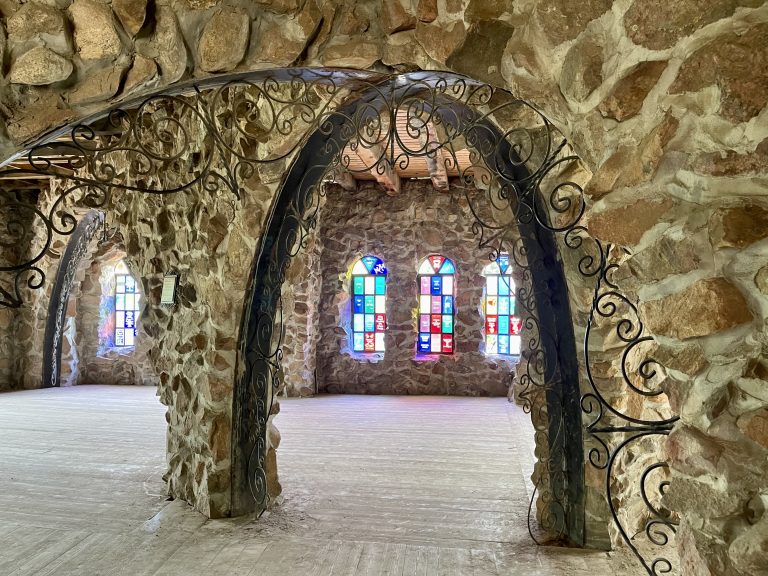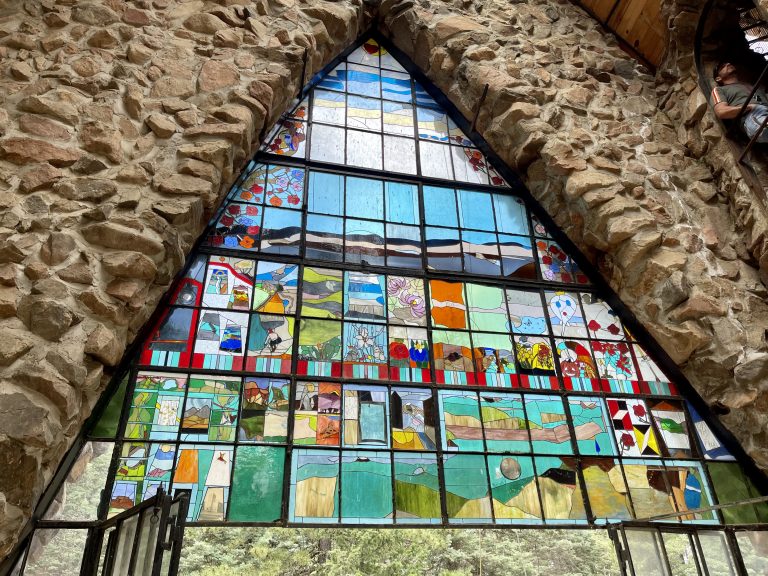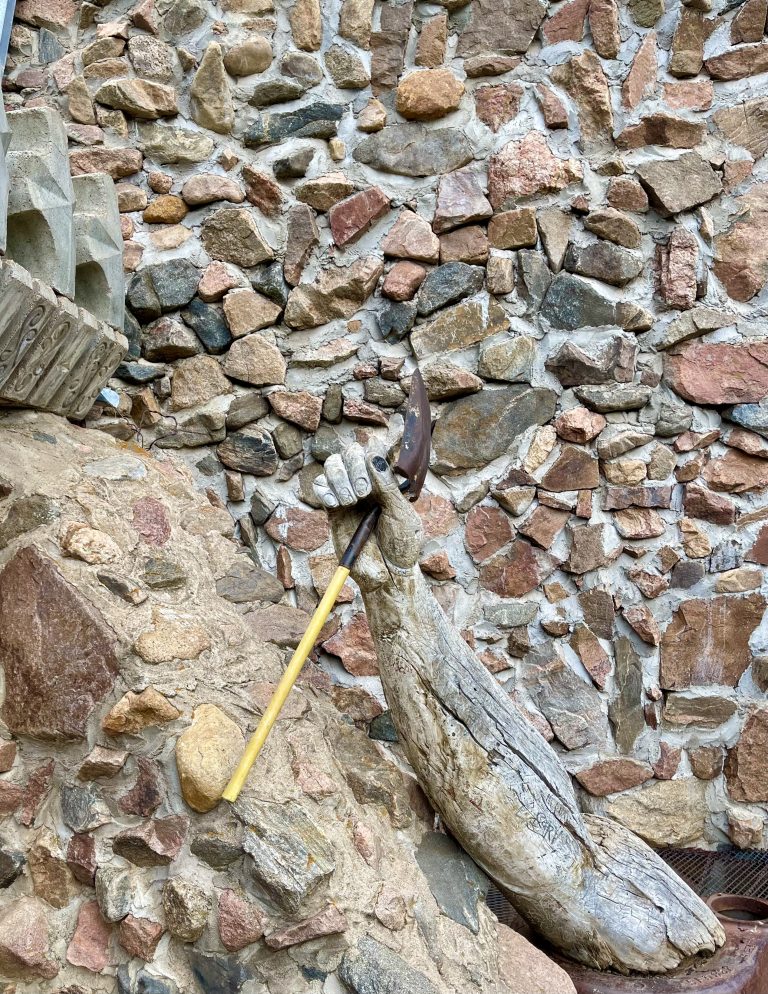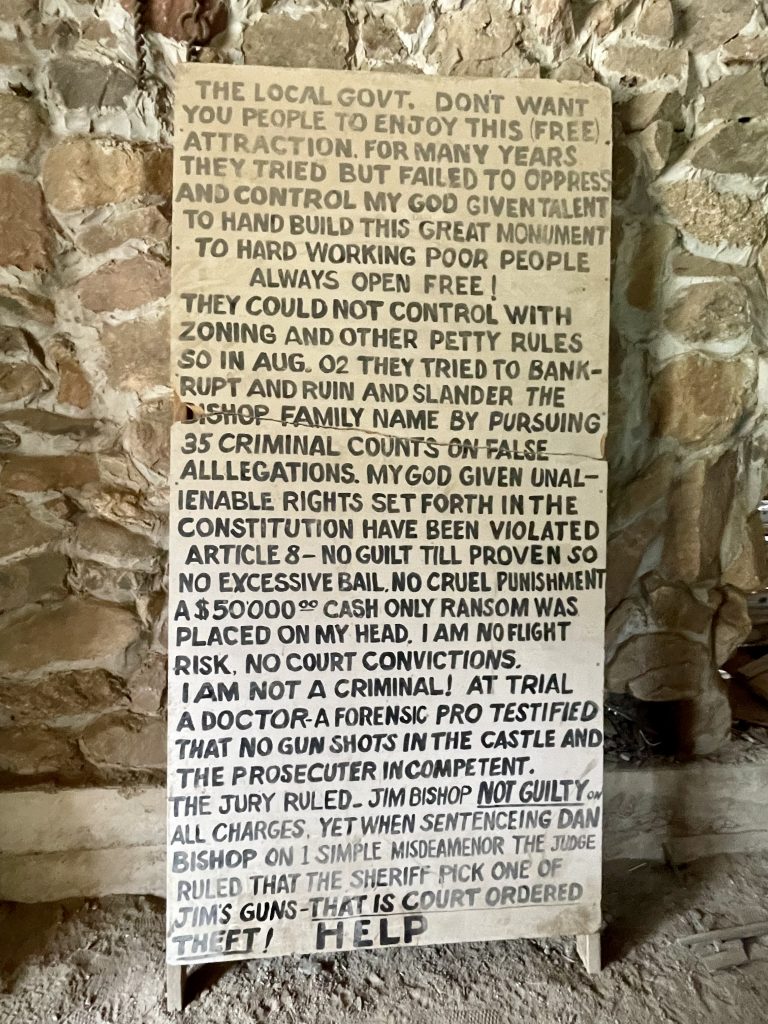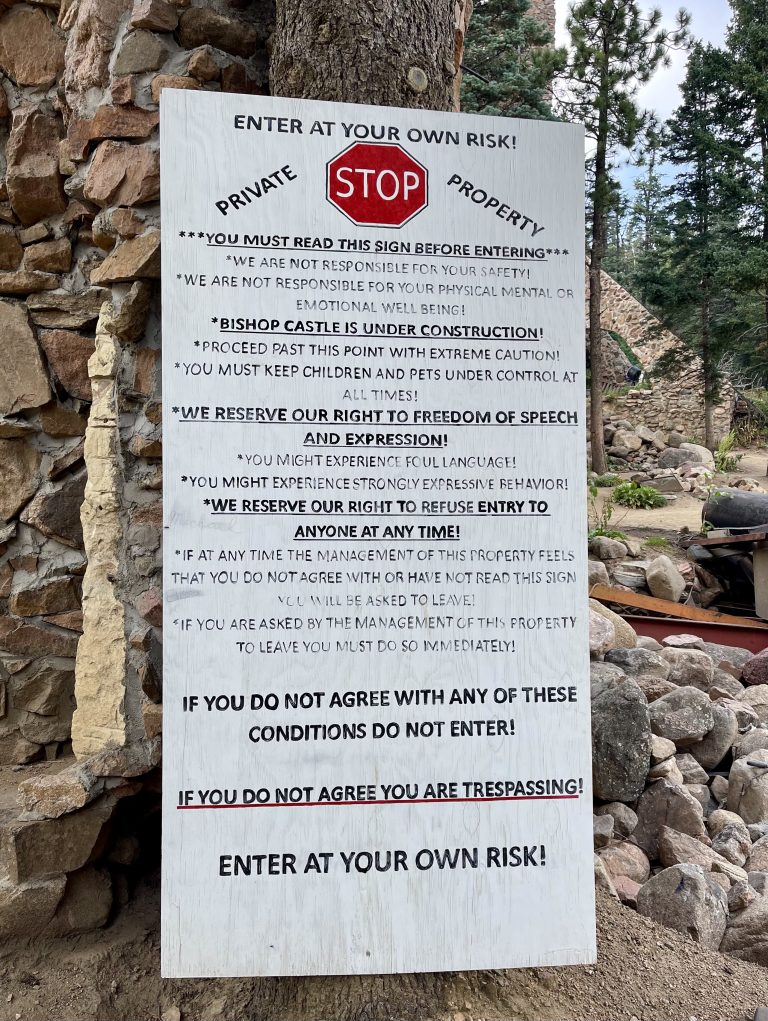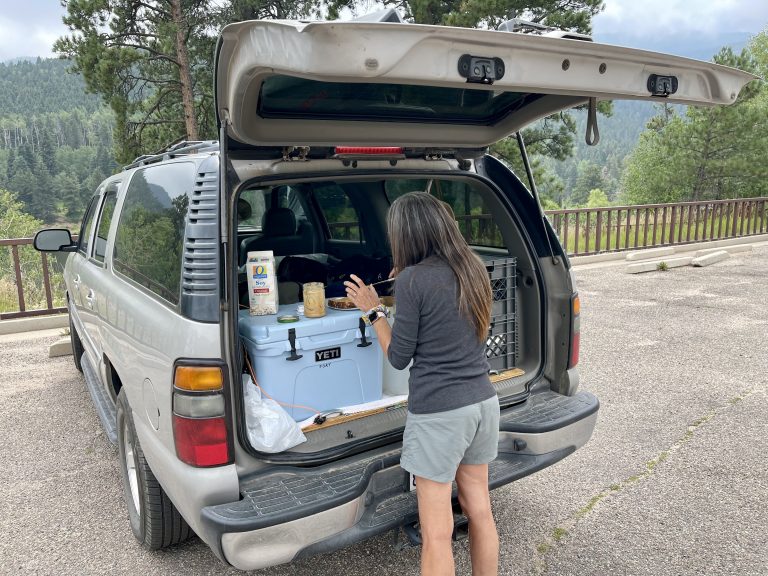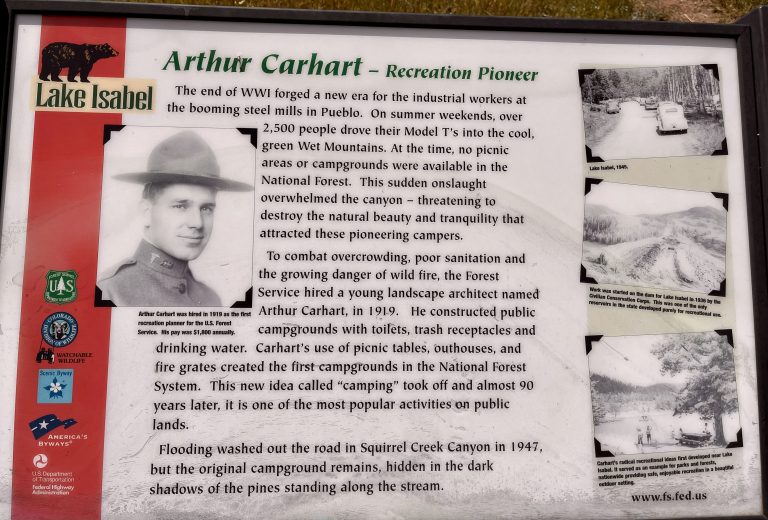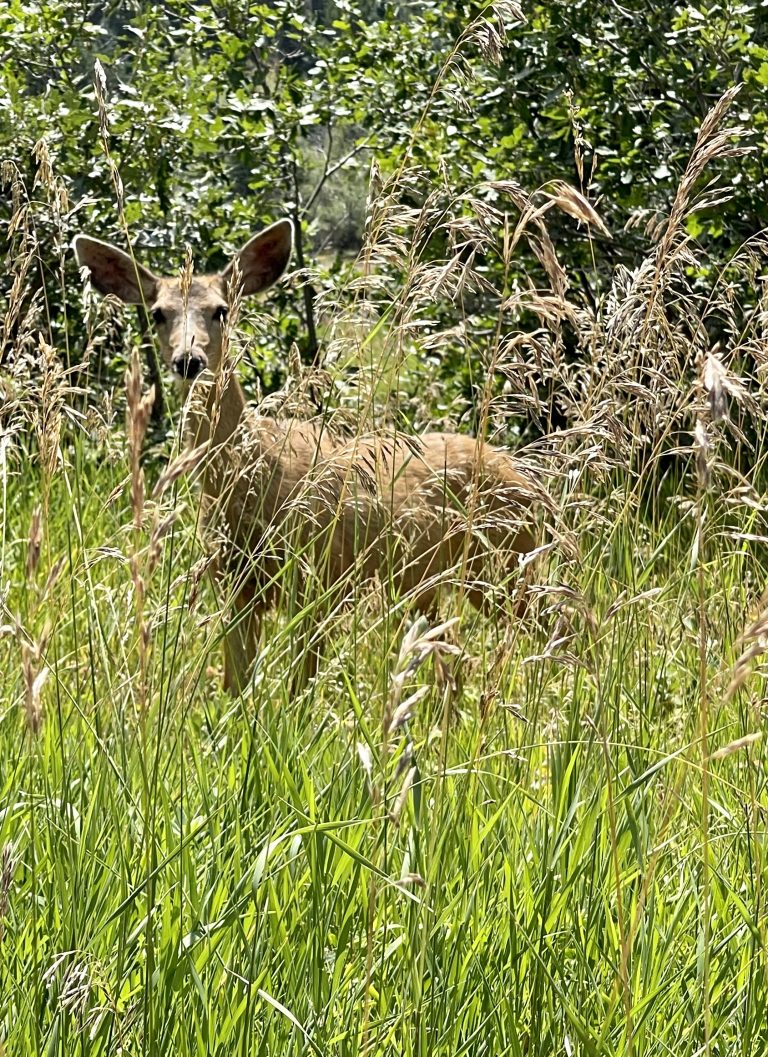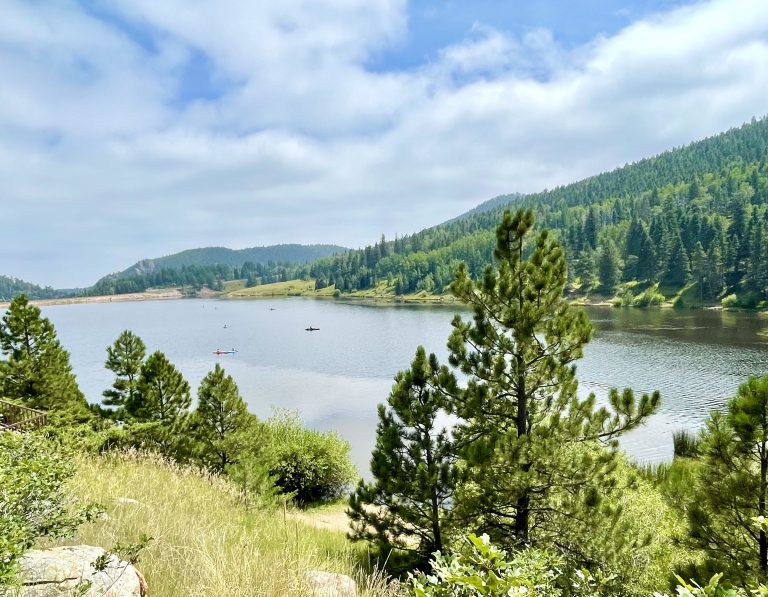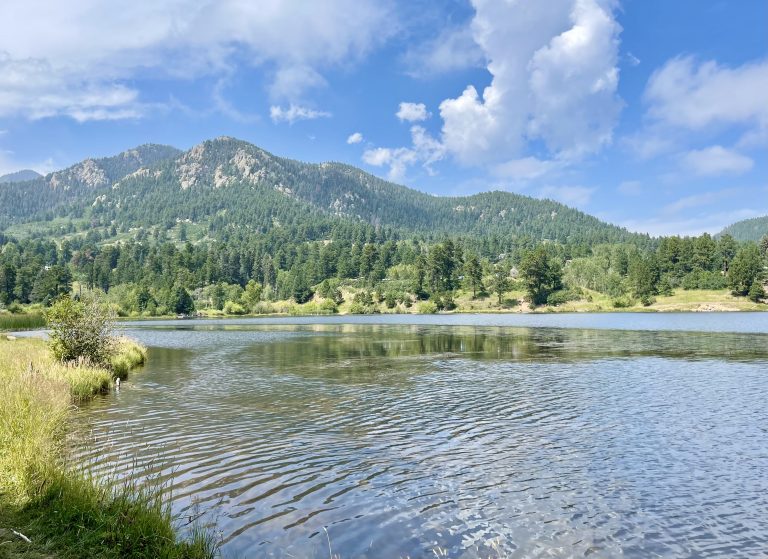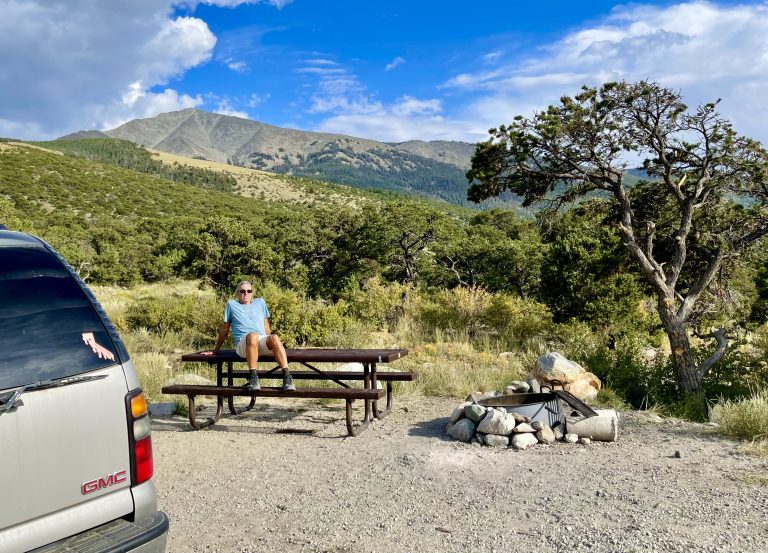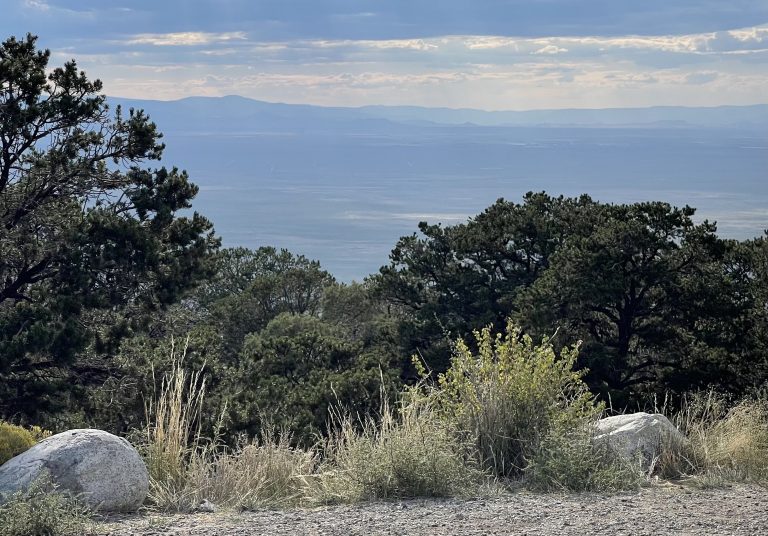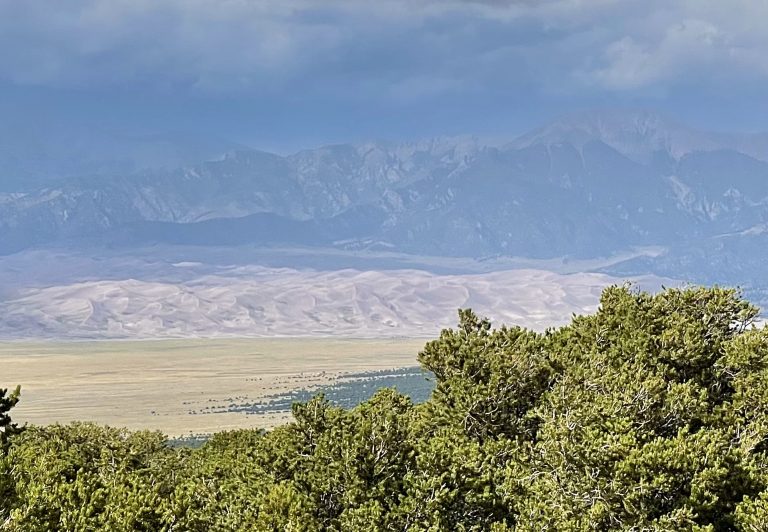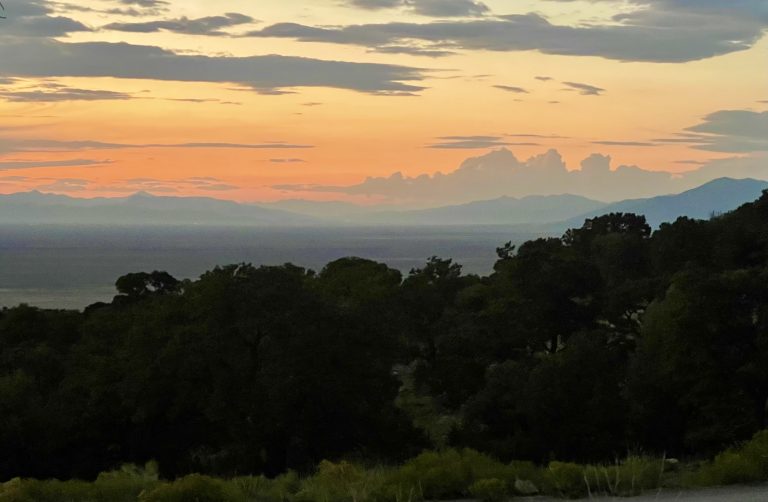August 29, 2021
It was hard to get to sleep in the Best Campground Ever with all the beauty around us and the peaceful cooling wind inside the truck through the open windows. I kept waking up and looking out the back window at the distant city lights and through my side window at the stars. Inside, it was comfortable enough for just a sheet. If I listened, I could even hear the big whitewater creek 400 feet below us and twice I heard coyotes howl in the distance.
Eventually, the sun brought us out. Today was forecast to be significantly cooler with highs almost 15 degrees lower than the day before. The sun was warming us as we made breakfast and we lingered over the views for a long time before finally getting in the truck to head back down the mountain. Our plan for today was to walk across the Royal Gorge Bridge that we’d seen from below on the train, then drive toward Great Sand Dunes National Park with a couple of stops along the way.
I started the truck and noticed the battery warning light was on. So, I turned it off to reset the light but when I tried to start it again there was nothing, not even a click. A bit of panic set in when I realized that we were really far up a dirt road that a tow truck could never make. I knew something electrical was going on but before I popped the hood again, I tried the starter and the engine came to life as if nothing happened. Rather than turn it off and start troubleshooting, I decided to get going, hoping we could at least get past the very rough road and back to the better dirt road in case we needed a tow. We’d intended to take a different, longer dirt road down the mountain, but scratched that idea.
As we drove back down the main dirt road, we were waved down by a young shirtless guy looking under the hood of his dilapidated minivan parked at one of the pull-off campsites. He explained that he lived nearby, had camped the night before with his girlfriend (she was inside the car) and their battery was dead when they got up in the morning. He asked if we could jumpstart his battery with his cables. We carry a small jump-start pack capable of starting the truck with a dead battery so I told him to put away his cables, hooked up our kit and got him started to profuse thanks. He told us he’d tried to wave down two other vehicles that passed this morning but we were the first to stop.
Glad to have helped, I jumped back into the truck and was met with nothing again as I turned the key. At least we were now on the main dirt road rather than the steep rough dirt road, and I was in a better place to work. I suspected a loose battery cable or bad ground somewhere and now our hood was the one up while I checked out what might be going on. As I jiggled the positive battery lead, I heard the radio crackle back on. It was simply a (barely) loose connection and after tightening both cables, aside from having to reprogram the radio, we were back in business.
We left the Cañon City area, headed toward the Royal Gorge Bridge, not far away. The bridge has never been part of a road but instead was built in 1929 for tourists to view the gorge from above. It was the largest suspension bridge in the world until 2001 when it was eclipsed by a bridge in China. The parking lot was almost full and when we went into the visitors center, we waited in what appeared to be a ticket line, which we thought odd as we’d been told it was free to walk across the bridge, though you could pay for a zipline. We quickly found out that we were wrong and we’d have to pay $24 a piece just to walk less than a quarter of a mile across it.
Nearly fifty bucks was too rich for us to stroll across a bridge we’d just seen from below by train, so instead we checked out an overlook near the bridge and took a short hike down a trail along the edge of the beautiful canyon. Then it was time to go to the castle.
We drove for about an hour down a winding road with almost no other vehicles. The sky had turned cloudy and light rain fell as we drove. Eventually, we turned onto an even more remote road where suddenly there were lots of motorcycles. It was a lovely road with just the right number of hills, views, twists and turns for a bike so we assumed it must be a popular local motorcycle route. A half hour later, we learned they were all headed to the same destination we were.
Many miles from any town and at 9,000 feet elevation, a very odd and very tall castle came into view as we rounded the bend. At least a dozen motorcycles and a handful of cars were parked in front.
As we pulled up, we immediately could see ornate iron catwalks that jutted high above from the stone walls and a metal dragon that topped the upper level. A couple dozen people were walking around gawking at the building and climbing all over it, even to the spire at the very top.
Jim Bishop, the owner, had single-handedly built the enormous castle. Or I should say, even at almost 80 years old he’s still building it. Among other things, Bishop personally laid more than 1,000 tons of stone he collected from the surrounding San Isabel National Forest and he created the dragon from recycled metal hospital trays.
As we crossed the moat and began exploring, we saw some brilliant engineering alongside some very scary building practices. Frightening metal catwalks jutted out every which way around and above the turrets. Narrow, twisting stone steps with high risers led steeply up into the various turrets. The castle was at once both awe-inspiring and terrifying.
We made our way up to a huge high-ceilinged and wooden-floored grand ballroom with door-less openings where one misstep could have sent us 20 feet below to certain death, likely impaled on wrought iron on the way down. Rotten wood butted against genius-level rock walls with lovely stained-glass windows. It was almost incomprehensible that visitors were allowed to run around inside anywhere they pleased as many unfinished parts looked to spell doom from an errant step.
The whimsical castle is, in many respects, an enormous art installation.
It was obvious from some of the hand-painted signs that Bishop had been fighting with the local government for a very long time about building the castle and keeping it open to the public. We were in awe of someone who could build such a structure, fight to keep the government from condemning it and allow anyone to climb all over his creation—at no cost. We hoped he’d keep winning his battles and finish his dream without some poor soul dying and causing the whole thing to close down. There are precious few opportunities in the U.S. to see (and crawl around in) something like this castle and fewer still people willing to risk everything for their dream.
We left the castle thoroughly impressed with humanity and continued down the winding road. Eventually, we pulled off at Lake Isabel National Recreation Area for a tailgate picnic lunch. When we stepped out of the truck, we noticed a sign and, assuming it would tell us where the trails were or what restrictions might apply for use of the area, we walked over to check it out. Instead, we learned the origin of campgrounds.
The sign said that a hundred years ago the National Forest Service hired a young landscape architect, Arthur Carhart, to find a way to preserve the over-used area. He ended up designing and building the very first National Forest campground in the country, right there, and it’s still there. Indeed, the sign attributed the origin of the entire idea of “camping” to Carhart. The year was 1919, World War I was just over and soldiers were returning, the automobile boom was just starting, and the Spanish Flu pandemic was still going on but finally beginning to wane. People were eager to get outside and connect with nature. Little did Carhart know that his novel “camping” idea would ultimately become ingrained in American culture and become a refuge once again during a new pandemic 100 years later.
The day already had been full of surprises, from an overpriced bridge, to a preposterous castle to discovering the birthplace of camping. And now we were heading to the largest sand dunes in the U.S.—surprisingly located not at sea level near a coast but instead at some 8,200 feet elevation at the edge of the Rockies. We dodged rainstorms that returned in fits and starts as we drove along the plains at the base of mountains en route to Great Sand Dunes National Park.
It was a little late in the day to start exploring the park so instead we turned off on a dirt road for a few miles to an uncrowded and inexpensive BLM campground on a mountainside a few miles from the park entrance. The sites were very private and we found a good one with views of both the mountains on one side and the plains, now far below.
A short hike near the campground began with a spectacular view of the sand dunes below us that we’d be visiting the next day.
The one-mile hike brought us alongside a creek and then to Zapato Falls. The hike required scaling a dripping wall along the creek and jumping across wet rocks to get far into a narrow gorge where the falls thundered into a pool so loud it was impossible to converse.
Tomorrow we’d explore the nearby national park and likely fill our boots with sand from the largest sand dunes in the country.

